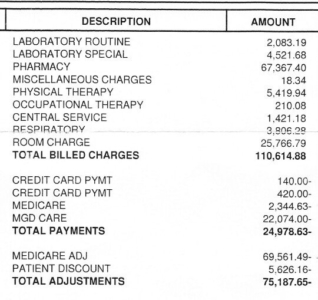Legislation that would end surprise medical billing would save nearly $7.6 billion over the next decade primarily by reducing federal subsidies for healthcare and insurance, the Congressional Budget Office (CBO) recently reported.
Senators Lamar Alexander (R-TN) and Patty Murray (D-WA) introduced the legislation, otherwise known as the Lower Health Care Costs Act, in June. The bill aims to eliminate surprise medical billing by setting reimbursement benchmarks for out-of-network care, meaning payers would only have to pay the local median in-network rate for the services.
The legislation also includes four other sections, including one to improve transparency of payer-provider contracts, such as banning gag clauses and anti-competitive terms that limit access to high-quality, lower-cost care, as well as sections related to reducing prescription drug prices, improving public health, and increasing the exchange of health information.
CBO estimated that the surprise medical billing provisions would generate the most savings. The office projected the proposals to increase revenues by $23.8 billion and reduce direct spending by $1.1 billion from 2019 to 2029, for a total decrease in the deficit of almost $24.9 billion during the period.
Premiums for employment-based insurance would drop by just over one percent, producing the bulk of savings, CBO explained.
“The decline in premiums would occur because the bill would require insurers to reimburse out-of-network providers on the basis of their own median rates for in-network providers (that is, the amount at which half of payment rates are higher and half are lower). Those median rates are generally lower than the current overall average rates,” the office wrote.
Premiums would fall if the legislation is enacted because payers would have to reimburse out-of-network care based on mediate rates for in-network services, which are generally lower than the current overall average rates.
CBO estimated that the number of providers seeing their private payer rates drop under the bill would be roughly equal to the number of providers experiencing an increase in rates.
“[F]acilities where surprise bills are likely, payment rates would move toward the median and that insurers’ payments to providers currently commanding in-network rates well above the median would drop to more typical amounts,” the report stated. “The decrease in premiums resulting from lower payment rates would be offset somewhat by increases in rates for providers that now receive below-median payments.”
Other sections of the Lower Health Care Costs Act that would lead to savings by 2029 included reducing the prices of prescription drugs, with an estimated $4.6 billion in savings, and improving transparency in healthcare, with an estimated $2.7 billion in savings.
The remaining two sections would offset savings from ending surprise medical billing, reducing prescription drug prices, and improving healthcare price transparency. Specifically, provisions to improve public health would boost spending by $24.3 billion through 2029. Proposals related to improving the exchange of health information would also raise the deficit by $322 million during the period, CBO reported.
Many polls found that the cost of health care was the biggest financial problem facing American families. The hope is that this will help end the constant back and forth over Obamacare, and create a solution to help lower costs overall.
Please stay tuned as we keep an eye on legislation affecting your businesses and families.
Recent Posts
The U.S. Department of Labor Announces Proposed Rule To Protect Indoor, Outdoor Workers From Extreme Heat
The U.S. Department of Labor has proposed a new rule aimed at protecting workers from extreme heat hazards. This initiative seeks to safeguard approximately 36 [...]
Supreme Court Overturns Chevron Deference: What It Means for Workplace Safety and Regulation
The landscape of federal regulation is set for a seismic shift following a recent Supreme Court decision. On June 28, in Loper Bright Enterprises, et [...]
Navigating the Compliance Maze: How NARFA Simplifies Employee Benefits for Automotive and Trade Industries
In today's complex regulatory environment, businesses in the automotive, roads, fuel, and related industries face unprecedented challenges in managing employee benefits. Recent studies show that [...]




